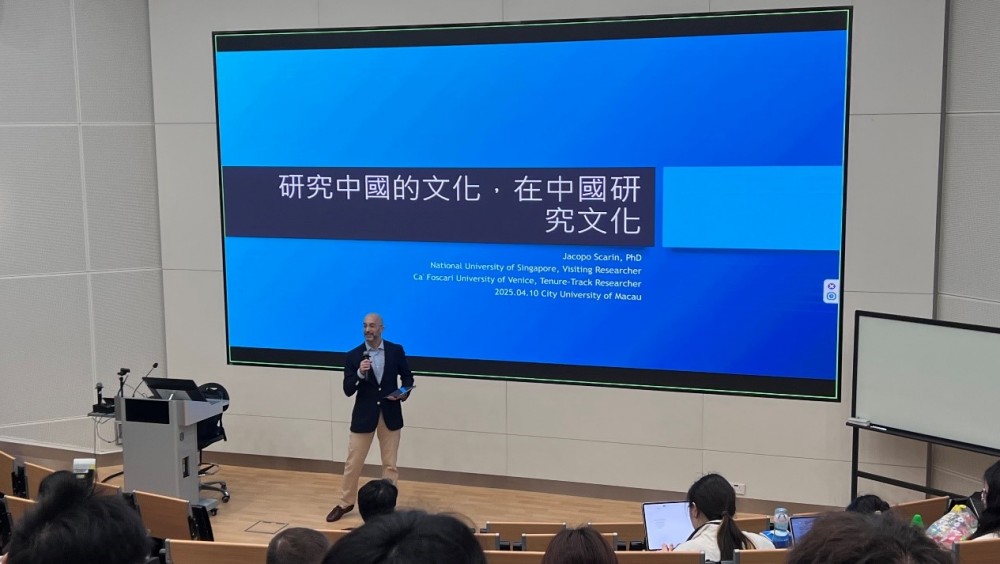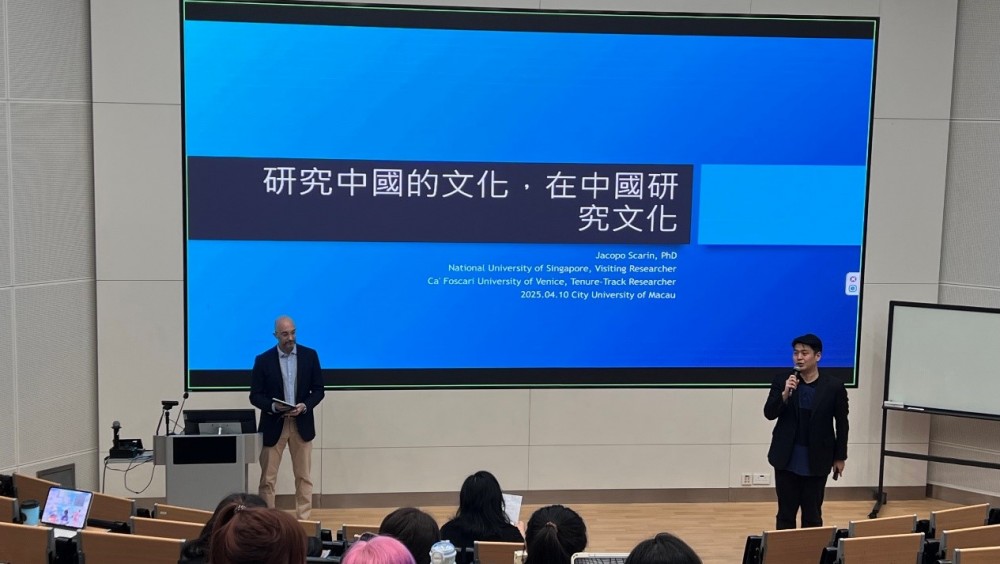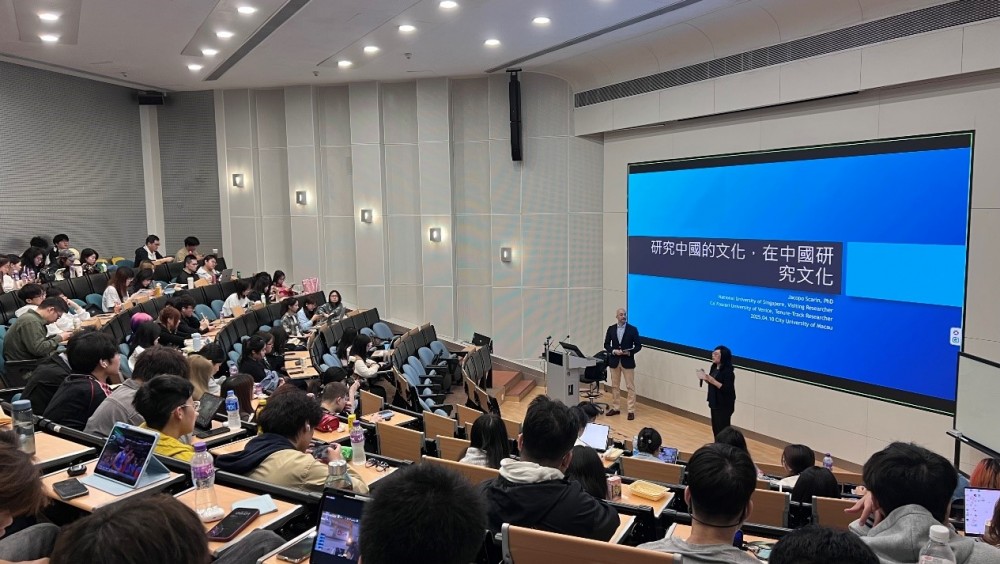On April 9, 2025, Dr. Jacopo Scarin (Gan Xuesong) from the Department of Asian and North African Studies at Ca' Foscari University of Venice delivered a special lecture on Chinese Religious Culture at the City University of Macau. Through the use of a city map of Beijing, inscription texts, and the unique phenomenon of religious integration in Macau, he explored the origins and development of Chinese religions.
Italy, as the core region of Catholicism, has religious activities deeply embedded in its social life. In his lecture, Dr. Scarin drew on Italy’s religious practices and church culture to illustrate the close relationship between religion and culture. Through interactive methods such as asking questions, he explained the deeper meanings of religion to the students.
Dr. Scarin then introduced the specific definition of religion and the origin and development of Chinese religions, proposing the concept of religion as a cosmology in practice. Using a city map of Beijing, he demonstrated the spatial coexistence of different religions; through the contemporary reconstruction of the Tongbai Palace, he explained the adaptation and revival of traditional religions in the process of modernization; and by analyzing the Merit Inscription for the Construction of the Altar from Baoshanting, he revealed the cross-cultural transmission of folk religions.
Finally, Dr. Scarin pointed out that as a Special Administrative Region of China, Macau displays a characteristic of religious and cultural diversity. Macau is home to the historic A-Ma Temple, reflecting traditional Chinese folk beliefs, as well as numerous Catholic churches, such as the Ruins of St. Paul’s, which was originally the façade of St. Paul’s Cathedral and stands as a testament to the spread of Catholicism in Macau. This harmonious coexistence of diverse religious cultures in Macau mirrors the inclusiveness and openness of Chinese culture.
Culture is the soul of human society, and religion is an important vessel of culture. In today’s globalized world, by studying the religions and cultures of different countries, we can not only gain a deeper understanding of the “other,” but also reflect on ourselves and trace the trajectory of civilizational integration.


 Search
Search Language
Language 

